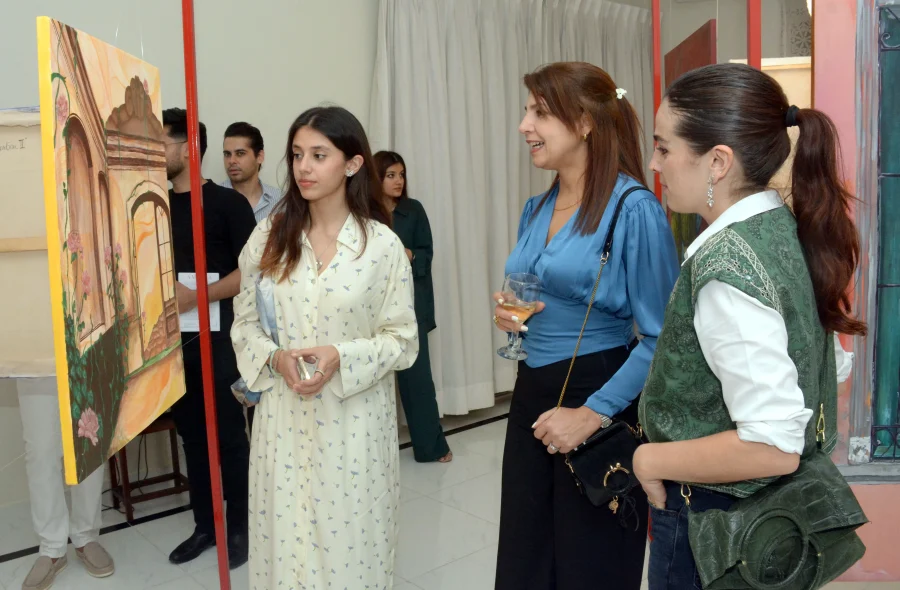Zubair Qureshi
The Embassy of the Argentina Republic hosted on Wednesday an exhibition of paintings by six Pakistani artists who have interpreted Argentine’s 19th century masterpiece, a representative novel ‘Amalia’ by the Argentinian author José Mármol (1817-1871).
Set in post-colonial Buenos Aires, Amalia was written in two parts and is a semi-autobiographical account of José Mármol that deals with living in Juan Manuel de Rosas’s police state.
Mármol wrote the novel at a time when he was in exile. Amalia along with Domingo Faustino Sarmiento’s Facundo soon became Argentina’s national novel.
The exhibition turned out to be a get-together of friends, diplomats and above all art-lovers and artists who had turned up to get inspiration from the works of young modern artists depicting an old cultural and geographical theme.
One could see the outgoing Charge d’Affaires of Argentina, Mr Emanuel Sotelo and Deputy Head of Mission (DHM) Mr Frederico Franceschini welcoming the guests and introducing them to the artists and the curator.
In the words of curator, Zarra, “The Pakistani artists—Fatima Mirza, AimenManzoor, MuhiburRehman, Sufyan Ali, AunRaza, Anusha Nadir and JonikaRiaz— despite the geographical distance between Buenos Aires and Islamabad have ingeniously bridged the gap connecting the intimate facets of Argentina’s history with the artistic talent flourishing in Pakistan.
“Each painting captures the emotions and chronology witnessed by the characters in the novel. The artists have skillfully utilized various art movements to interpret their renditions of Amalia, she said. To sum up, Amalia is a thoughtfully curated show in which Islamabad is the artist and Buenos Aires the Muse.
One of the artists, MuhiburRehman said he had portrayed Amalia in attire reminiscent of the mid-19th century to evoke a vintage feel, paying homage to her Buenos Aires heritage by featuring her holding an empanada, a beloved local delicacy. In the second portrait, he said he had created a captivating image of Amalia ensuring both artworks harmonize with a cohesive colour palette.
Fatima Mirza said in her portrayal of ‘Amalia’ she painted a scene that encapsulated the hope and freedom symbolized by Amalia. The two-part artwork showed Amalia looking out of a window at the lively streets below bathed in the gentle light of street lamps and indoor lighting. She said she aimed to evoke a feeling of peace and positivity as Amalia witnesses the contemporary, liberated Argentina she dreamed of. Artist Sufyan Ali has tried to depict the raw emotions of the book’s characters creating expressions “that resonate with everyone.” JonikaRiaz has painted a window inspired by the part in the novel where Eduardo seeks refuge at Amalia’s home prompting them to keep doors and windows shut.
Aimen has picked ‘Boy from the Window’ in her interpretation of Amalia showing a boy who observes everyday compositions. Anusha has chosen to focus on dreams as the central theme while Aun has tried to identify his personal struggle with that of the characters in the novel.
The visitors praised the works of the Pakistani artists and their deep understanding of Argentina’s culture, art and national spirit.










